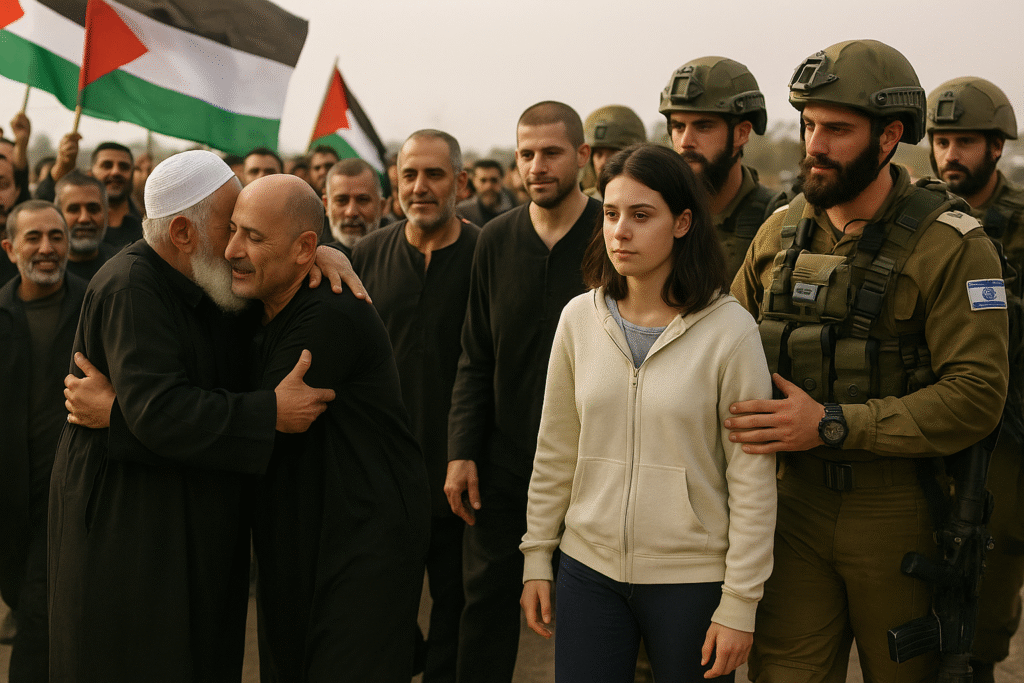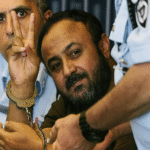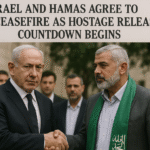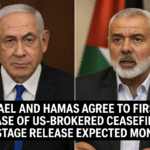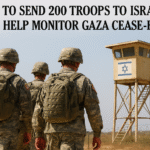By Harshit | October 14, 2025 | Tel Aviv, Israel | 7:00 AM
Emotional Reunions as First Phase of Ceasefire is Completed
Israeli and Palestinian families celebrated on Monday as a major hostage and prisoner exchange brought a momentous step toward ending two years of war in Gaza.
In the first phase of a US-brokered peace plan, Hamas released all remaining living Israeli hostages, while Israel freed nearly 2,000 Palestinian prisoners and detainees. The emotional scenes that unfolded highlighted the human toll of the conflict, with families screaming, crying, and embracing their loved ones after years of separation.
“I am overwhelmed with emotion and joy,” said Arbel Yehoud, a former hostage reunited with her partner, Ariel Cunio. “For over two years, the hope of holding Ariel again sustained me every single day.”
For Palestinians released from Israeli detention, jubilant crowds waving flags greeted the returning prisoners as buses crossed into Gaza and the occupied West Bank. Many wore traditional Keffiyeh scarves, symbolizing their resilience despite years of hardship.
Trump Declares ‘Historic Dawn’ in Middle East Peace
US President Donald Trump arrived in Israel minutes after the first hostages were freed. Speaking to Israel’s parliament, the Knesset, he described the event as a “historic dawn in a new Middle East.”
“This long and painful nightmare is finally over, not only for Israelis but also for Palestinians,” Trump said, adding that the process of rebuilding trust and stability in Gaza had begun.
Trump then traveled to Sharm el-Sheikh, Egypt, to meet over 20 world leaders for the next phases of the peace plan. The summit was attended by UK Prime Minister Sir Keir Starmer, French President Emmanuel Macron, Palestinian President Mahmoud Abbas, and leaders from Egypt, Qatar, Turkey, and other Arab nations.
At the summit, a declaration was signed by Egypt, Qatar, Turkey, and the US as guarantors of the ceasefire, which aims to formally end the two-year war.
Humanitarian Relief and Continued Challenges
While the exchanges were celebrated, significant challenges remain. The ceasefire, which began Friday, has allowed an increase in humanitarian aid into Gaza, though needs remain immense. The UN estimates at least 600 aid trucks per day are required to begin addressing Gaza’s humanitarian crisis, with parts of the territory, including Gaza City, previously declared in famine conditions.
Despite this, Israel disputes some UN reports, citing its ongoing efforts to provide aid through military-coordinated channels.
Families and local residents continue to navigate the dual emotions of relief and grief, as the remains of up to 24 deceased Israeli hostages are still held in Gaza. For families awaiting closure, the slow recovery underscores the war’s enduring human cost.
Governance and Security: Negotiations Ahead
The peace plan includes the creation of a temporary transitional committee in Gaza, led by Palestinian technocrats and overseen by a “Board of Peace” chaired by the US President. Former UK Prime Minister Tony Blair is expected to play a key role in the board, which will oversee Gaza’s administration before authority transitions to a reformed Palestinian Authority.
Key sticking points remain for the later phases of the plan, including:
- Israeli troop withdrawals from Gaza
- Disarmament of Hamas
- The future governance and political autonomy of the Strip
Hamas has previously resisted disarmament unless a Palestinian state is established, while Israel and Prime Minister Benjamin Netanyahu have opposed future direct involvement by the PA.
When asked about the next phase, Trump stated: “It’s started,” adding that the various stages of negotiations were intertwined and complex.
The Toll of War and the Urgency of Peace
The conflict began with a Hamas-led attack on southern Israel on October 7, 2023, which killed roughly 1,200 people and took 251 hostages to Gaza. Israel’s subsequent military response has led to staggering casualties, with over 67,000 Palestinians killed, including tens of thousands of children, according to Gaza’s Hamas-run health ministry. UN reports indicate that more than 90% of residential buildings in Gaza have been damaged or destroyed.
As families celebrated the return of hostages and prisoners, the world watched closely, aware that the fragile ceasefire is only the first step in a long and complex journey toward sustainable peace.

